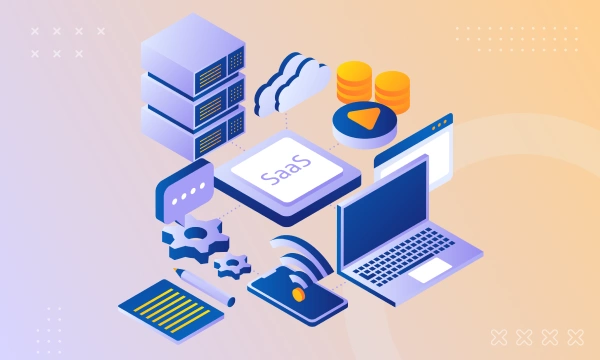Introduction
Additionally, the current business strategy is a software as a service (SaaS). According to a Virayo study, more than 80% of companies use some form of SaaS application.
Therefore, given that SAAS is presumably quite well-known, let’s get right to it and learn about the various SAAS business strategies.
You must choose the ideal SaaS business model for your offering if you want your software project to be successful.
Even if you’re just getting started with SaaS development, this could seem like stating the obvious. Having said that, you’d be amazed at how frequently startup founders, and even more established companies, enter the SAAS development phase without giving SAAS business models much, if any, thought.
And trust me, it’s not ideal to have no notion how you’re going to make money off your SAAS development.
Here’s more about the SAAS model & its importance!
The pricing model for Software as a Service (SaaS) is essential to the business model. It determines how the service provider will charge the customer for access to the Software. SaaS providers can use several different pricing models, and each has its own advantages and disadvantages.
The SaaS pricing model is a crucial aspect of the business model and can significantly impact the service’s success.
SaaS providers must carefully consider the pricing model that best fits their target customers’ needs and business objectives. A well-designed pricing model can help attract and retain customers while also generating revenue for the provider.
So, stay tuned and keep reading to know more about different business models.
SAAS different pricing models –
You must have a pricing strategy in place for your SAAS development. No matter how outstanding your product or service is, unless it has a fair price, nobody will spend money on it.
There are various pricing structures, and each has benefits and drawbacks. The key is to experiment and try different models until you find one that perfectly suits your product.
In this blog, we will be covering the most popular and successful business models for SaaS companies and startups:
Freemium pricing model
Freemium pricing is a pricing model where the provider offers a basic version of the Software for free and charges for access to more advanced features or usage levels. This pricing model is ideal for businesses that need to attract new customers and build their user base. It allows the provider to offer a lower barrier to entry for new customers. However, this pricing model may not be sustainable for the provider if too many customers use the free version without upgrading.
Flat rate pricing
Flat rate pricing is a simple pricing model for Software as a Service (SaaS) companies where the provider charges a fixed price for access to the Software. It means that the customer pays the same amount regardless of how much they use the Software. SaaS providers often use this SAAS business model for their basic or entry-level plans.
The flat rate pricing model is simple and easy for customers to understand. There are no complicated usage tiers or features to consider, which makes it easy for customers to compare different SaaS providers.
The flat rate pricing model provides predictable costs for customers. They know exactly how much they will pay each month or year, which can help with budgeting and forecasting.
Per user pricing model
Right now, many SaaS companies charge customers on a per-user basis. The price changes depending on how many customers or members are using the product.
This kind of payment structure is present in a wide range of SAAS applications, including Salesforce, Slack, G-Suite, and others. Users find it to be simple to comprehend and familiar.
When many users need to use your Software at once, per-user pricing is ideal, particularly if each user requires access to unique features. Per-user pricing, in particular, can be very efficient in large-scale workspaces.
Pay per feature!
It is probably one of the most well-known and popular strategies among SaaS providers. The function-based pricing plan levies a variable fee on subscribers depending on the features used.
The customer will only be charged for the features they actually use. The user will pay more for something, the more of it he desires. So it’s (in the end) a win-win situation for both SAAS companies and their customers.
It is crucial to think about how to create the packages to benefit the customers. Users are less likely to transfer if the “basic plan” is unappealing and never updated to more advanced options.
As long as the features and prices are balanced properly, the saas business model works well.
Tiered SAAS business model
A tiered pricing model is a common pricing strategy for Software as a Service (SaaS) companies. The product’s pricing is divided into multiple tiers or levels, with each tier offering different features and benefits at different price points.
The idea behind this pricing model is to cater to different customer segments with different needs and budgets. By offering a range of pricing options, SaaS companies can attract a wider range of customers and increase their revenue streams.
Typically, a SaaS company will offer three to five pricing tiers, with each tier offering different levels of functionality or features. For example, the basic or entry-level tier may offer limited features and support, while the higher tiers may offer more advanced features.
Usage-based pricing model
Usage-based pricing is a popular model for SAAS development that charges their customers based on their usage of the product or service. Under this model, the pricing is directly tied to the usage volume, allowing customers to pay only for what they use, which can make the pricing more predictable and flexible.
This SAAS business model can be more cost-effective for customers who have varying or unpredictable usage patterns, as they only pay for what they use.
For SaaS companies also, usage-based pricing can provide benefits such as increasing customer engagement, driving product usage, and promoting customer retention.
Usage-based pricing is a viable model for SaaS companies looking to create a more customer-centric approach to pricing while also driving revenue growth. It requires careful consideration and implementation but can offer benefits for both the customer and the company.
To conclude
Pricing models are a crucial aspect of Software-as-a-Service (SaaS) businesses. Choosing the right pricing strategy is essential for attracting and retaining customers while ensuring the financial sustainability of the business.
SAAS business models have their own advantages and disadvantages, and the choice depends on various factors, such as the target market, the value proposition of the product, and the competitive landscape.
However, regardless of the pricing model, transparency and simplicity are critical to avoid confusing customers and promoting trust. Additionally, SaaS companies need to regularly review and adjust their pricing strategies to reflect changes in the market and the evolving needs of their customers.
If you need guidance on choosing the right SAAS pricing model for your product, then our team of experts is here at your rescue to help you out!







